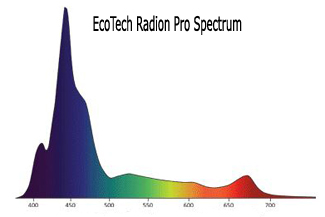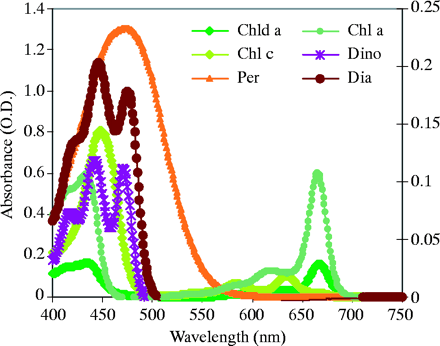- Joined
- Jun 13, 2017
- Messages
- 277
- Reaction score
- 445
Does anyone know if this will be coming to the UK? PLEASE SAY IT IS!! ;Woot
Follow along with the video below to see how to install our site as a web app on your home screen.
Note: This feature may not be available in some browsers.
Yes you did, Ryan asked in the video to comment and request what would we like to see in this fixture. Diddent mean to waist your Mb[emoji12]I think I saw this answered in the Aquaticlife thread about these. The T5's are split 2front/2back and you have to light both bulbs. You won't be able to light just 1 bulb in each.
will these ship with bulbs ? what bulbs were used over the DT in the video?
My request is 2/4 bulb operation 1 front 1 back etc. What started as supplemental t5's is now a t5 lighting solution with supplemental LED's... and as always great job and thanks for the good work
I love you guys!
Thanks, Ryan!
Please let me know why Kessil says that PAR meters can't work to measure their fixtures.
https://www.reef2reef.com/threads/keep-kessil-or-go-radion.322737/page-4#post-4126954
Grandis.
@Ryanbrs did you guys happen to measure the temperature of the cold spots? It would be interesting to see how the waterproof end caps are (or aren't) trapping heat.
I'm still sold on my Spectra with a Radium but this fixture is extremely tempting! Here's to hoping for a win this week!
Doh. Can't enter the contest unless you live in the US? No love for Canada?
Dennis
MH is so dead. Don't even sell half of what LEDs do and it's shrinking. The Gimmick is winning.
I can't say that's the case here but that could be their claim.


http://jeb.biologists.org/content/206/22/4041The spectral data of the separated peaks revealed that most of the major pigments have considerable absorbance between 400-540 nm, with major peaks between 440-480 nm. The widest absorbancy spectral profiles belong to the accessory carotenoid pigments, such as perdinin, diatoxanthin and diadinoxanthin, which display blue/blue-green absorption bands that partially overlap the chlorophyll absorption bands in that domain (Fig. 4).

It's a great idea, what they did with the fixture. It just seems like so much light that you can't dim. Well, unless you raised the fixture. For some reason I've found better coral heath with quite a bit less light. I don't know why, I wish I knew. I try to shade my Zoe's and acans at the bottom or under rock ledges. (50-75ish) If I ran those numbers I'd bleach or smoke corals for sure. Lower alk and lower, but detectable nutrients. It's frustrating because it's hard to find a reasonable priced fixture that works well. I'm definitely a fan of t5s for coverage and health, but led for moonlight and visual appeal. I'll be in the market soon, upgrading a system.
Question for you. I love the idea of using this with Kessils but the lack of a moonlight setting is a big draw back for me. I've looked on BRS and I didn't see a separate moonlight solution. If I had one of these 48" fixtures for a 60" tank, do you offer a moonlight solution that would work?I am not sure of the logic used to make a statement like that but I can guess as to what that post is getting at.
A PAR meter hasn't always been the best way to compare two LED modules because most people end up testing them with all channels on max which is not the way many people run them. For example, the kessil 360 and radion xr15 pro are both $399 modules. Let's take a look at an average of all 108 PAR measurement points in our 24" cube
xr15 pro all channels 100% max - 108 point average par of 222
xr15 pro all channels AB+ setting - 108 point average par of 159
Kessil 360 100% / 50% color - 108 point average par of 140
So the xr 15 pro has significantly more par if you plan on running it at 100% but if you plan on running the settings Ecotech suggests with the AB+ program it is only 10% more par. To some 10% might be a big deal but the corals are almost certainly not going to have significant health or growth differences between within 19 par. So it might be that other features end up being the determining factor in what's best for each reefer. Both options have their unique value offerings.
Second, a PAR meter measures all PAR the same however chlorophyll and carotenoids absorbance peaks are very specific as to where they are going to be most efficient. Just 10nm to the left or right and the absorbance is much lower. So theoretically if you get the peaks right you could have a much lower par light and still provide more energy to the corals. I can't say that's the case here but that could be their claim. This is a graphic I found which shows this to some degree.

Question for you. I love the idea of using this with Kessils but the lack of a moonlight setting is a big draw back for me. I've looked on BRS and I didn't see a separate moonlight solution. If I had one of these 48" fixtures for a 60" tank, do you offer a moonlight solution that would work?
I don't need moonlights, I enjoy them. Most can be dimmed enough but my understanding is that the Kessil line cannot.Man this is tempting. I’ve been comtempletjng
Why would you need moonlights??
Most led fixtures can be dimmed enough for use as moonlighting.
International contests/giveaways are a legal nightmare. Canda considers this an illegal lottery unless there is a skill element... As you can imagine that type of legal mess is something we want to stay a million miles from : )
If you have a apex, they have an add on just for moon lights.....its plug and play.I don't need moonlights, I enjoy them. Most can be dimmed enough but my understanding is that the Kessil line cannot.
Really? I don't have kessils.. well kessil display lights, but I didn't know that.If you have a apex, they have an add on just for moon lights.....its plug and play.
I use them.
Yeah, and most sps should be able to tolerate 250-300. Except for when I increase my lights 3% every 2 weeks and get 6 weeks in and start having issues, then no. It doesn't matter. They are just numbers on a par meter screen. Except when you are trying to pick out a fixture that works all around for under a grandYou can acclimate zoas and lps to high light. The few that I have in my tank get 250+par at the bottom of the tank.
AP700 has a lunar light cycle. The 360's those usually don't come on until 10-15% power from what I've read.Question for you. I love the idea of using this with Kessils but the lack of a moonlight setting is a big draw back for me. I've looked on BRS and I didn't see a separate moonlight solution. If I had one of these 48" fixtures for a 60" tank, do you offer a moonlight solution that would work?
Thanks very much for the reply!I am not sure of the logic used to make a statement like that but I can guess as to what that post is getting at.
A PAR meter hasn't always been the best way to compare two LED modules because most people end up testing them with all channels on max which is not the way many people run them. For example, the kessil 360 and radion xr15 pro are both $399 modules. Let's take a look at an average of all 108 PAR measurement points in our 24" cube
xr15 pro all channels 100% max - 108 point average par of 222
xr15 pro all channels AB+ setting - 108 point average par of 159
Kessil 360 100% / 50% color - 108 point average par of 140
So the xr 15 pro has significantly more par if you plan on running it at 100% but if you plan on running the settings Ecotech suggests with the AB+ program it is only 10% more par. To some 10% might be a big deal but the corals are almost certainly not going to have significant health or growth differences between within 19 par. So it might be that other features end up being the determining factor in what's best for each reefer. Both options have their unique value offerings.
Second, a PAR meter measures all PAR the same however chlorophyll and carotenoids absorbance peaks are very specific as to where they are going to be most efficient. Just 10nm to the left or right and the absorbance is much lower. So theoretically if you get the peaks right you could have a much lower par light and still provide more energy to the corals. I can't say that's the case here but that could be their claim. This is a graphic I found which shows this to some degree.

That used to be so for the average hobbiest. If kessil made that statement they probably did before technology improved. Either way that's no longer the case.Just that some of Kessils watts go to true UV which is not really measured via PAR.
